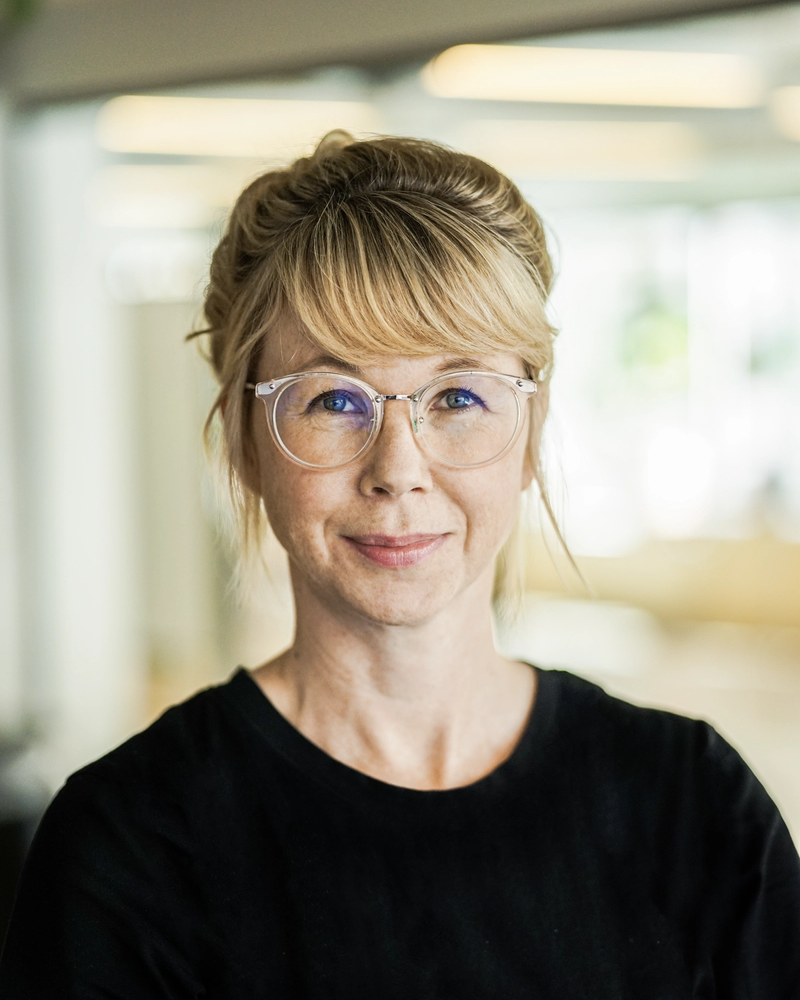When Uncertainty is the New Normal
How can businesses stand firm in facing crises?

Thursday 12 March 2020, Norway shut down. Most of us remember this day well. It can best be described as a surrealism that left a mark on us all. It also marked the start of a long period characterized by uncertainty and new questions. Everything changed overnight, and we were left clueless about our tomorrows. Planning ahead was impossible.
"I pushed my customers' appointments ahead and just went: 'Well, I'll see you in six weeks, and we’ll just see what the world looks like then, I guess.'"
Female
April, 2020
“I really thought we were going to go back to work after two weeks, and then we were going to kind of be done with it. And now I feel like… It’s a bit optimistic to think that next summer is going to be okay? Maybe you still have to count on this lasting two more years, right?“
Female
August 2020
When Norway shut down in March 2020, we decided to follow 19 households from across the country. The quotes above are from that study, carefully following the pandemic over a span of three years.
Using digital interview methods and prompting video recordings, we gained a unique insight into people's personal experience of insecurity during what was a novel, and for many uprooting crisis.
Uncertain Times
Why is such a study important? Because a crisis rarely operates alone.
Covid-19 was replaced by new crises, and the uncertainty we felt during the pandemic far from disappeared. It rather moved to new areas.
Russia invaded Ukraine and a war broke out in Europe. The power crisis led to increased costs and new redundancies in business. Inflation and higher interest rates lead to increased economic uncertainty. At the same time, we have a climate and nature crises circling above our heads at all times.
We live in increasingly uncertain times.
A fact that makes it increasingly difficult to plan, for the future we imagine is constantly changing. What should then guide our decisions and strategies?
Theory tells us that good choices are defined based on the assumption of scarcity. Everything in this world is limited: from the resources we have access to, to the time we are allotted here on earth.
Therefore, we must utilize resources to the maximum, allowing for minimum waste. This is what we call "efficiency".
But what is effective when facing uncertainty and crisis?
The American economist Joseph Stiglitz has used a car-metaphor to describe how the principles of planning change under uncertainty. Based on the scarcity theory, it is "efficient" not to have fueled your vehicle more than is absolutely necessary to get from A to B. But, were an accident to happen, this strategy proves inefficient.
On the contrary, when the unexpected occurs, you should have excess fuel available. This ensures us the capacity to change route if necessary. Perhaps an extra tire in the back, too.
While the tire is redundant 99 percent of the time you spend in your car, it proves absolutely invaluable when you need it.
Different Types of Uncertainty
At this point, let's try deciphering the word "uncertainty".
The school of business and economics has long taught uncertainty as an equivalent to "risk". Meaning, something that can be predicted and calculated. However, when the uncertainty itself is uncertain, it cannot be calculated.
But bear with us.
Donald Rumsfeld, a former US defense minister, explained uncertain uncertainty with the following:
"There are 'known knowns'. These are things we know that we know. There are known unknowns. That is to say, there are things we know that we don't know. But there are also unknown unknowns. There are things we don't know that we don't know."
Donald Rumsfeld
Former US Defense Minister, 2013
What he means by this, is that we can distinguish between "known uncertainty" and "unknown uncertainty". The former are risks that we know can occur, and which we can try to calculate.
For some things we can calculate or predict. Other things, dare we state, are useless to try and define because we do not have historical data. Unknown uncertainty, being one example. This kind of uncertainty cannot be calculated.
For example, we have no idea how a world engulfed in climate change will behave. It is difficult to foresee the frequency extreme weather will occur. We only know that the probability of such events increases as the global temperature rises accordingly. These are the type of crises or misfortunates that we cannot plan for or to a sufficient extent prepare for. They therefore represent what is called deep or radical uncertainty.
Planning
Uncertainty was the topic of discussion in a digital broadcast we made during the pandemic. Our aim was to better understand how to plan for the unexpected, in a time when that felt like a question of survival.
To broaden our knowledge, we interviewed Tian Sørhaug, a sociology professor at the University of Oslo. He used the general construct of a fire department to explain how planning for the unexpected is indeed possible. Or, put differently: how to adjust effectively when faced with uncertainty.
Here's how he put it:
Fortunately, the course of most of our days and nights run fire-free. Yet, the fire department is equipped and ready to head out on missions at all times. 24/7.
So, there's evidently some free capacity available. So much so, that history says you used to be able to take your kitchen knives down to the fire station and get them sharpened on demand. It was a way of making the fire department more useful. Perhaps somewhat unconventional, according to today’s practices.
From a scarcity perspective, today’s practice may look like waste. Why do be on duty if there is no fire? From a business perspective, we could have calculated how much the fire department could save, purely financially, by sending the employees home during this time.
We could also calculate how much we as a society could save by disbanding the fire department, which certainly would represent a significant sum. But everyone understands doing so, disbanding, would be a mistake.
While we know the possible cost savings, we cannot predict the cost of a fire breaking out with a lack of fire department capacity, until it's too late.
A Pandemic Crisis and a Climate Crisis
Similar to how a fire department stands firm in the event of a fire, so should an effective strategy withstand crises.
Like a pandemic.
The Covid-19 pandemic was a predicted crisis. Still, none of us knew how to handle it. Sounds familiar? Indeed, this is also the case for climate change.
We know that life altering changes are brought alongside climate change, but we know little about the true kind of challenges they bring with them. And we know just as much about the consequences of not preparing for said changes and challenges.
"You couldn’t just decide to not let the corona crisis concern you. It was so 'in your face'. So is, in theory, the case for the climate crisis. But I think a lot of people aren’t fully grasping it."
Female
December, 2022
"I think in 50 to 100 years, you will have to make many major choices, similar to what you had to do during the pandemic. Because the [climate, journ.anm.] crisis will be so very close, you will have no choice."
Male
December, 2022
So how do we deal with this lack of knowledge?
We make a strategy. And a good strategy makes you robust, like the fire department. That is, resistant and adaptable.
The first step towards this is to introduce some "slack" (or spare capacity) in your organization. A spare wheel, neatly tucked away in your trunk.
Should the unforeseen occur, we then have the resources we need in order to deal with it. In other words, strategy is about building strategic resources, and about using them in a smart way.
This is what ÆRA helps companies and organizations with every day.
Not only do we build strategic resources. We also look at how we can use these resources in ways to better adapt to different scenarios. This may result in the development of new products and services, or alternative business and earnings models.
And, equally important, building a culture where people strengthen and support each other to take on new roles and responsibilities when the situation demands it.
To fully achieve this – not only plan for it – we need leadership that ushers and aids performance no matter the degree of certainty, or uncertainty.
Authors



